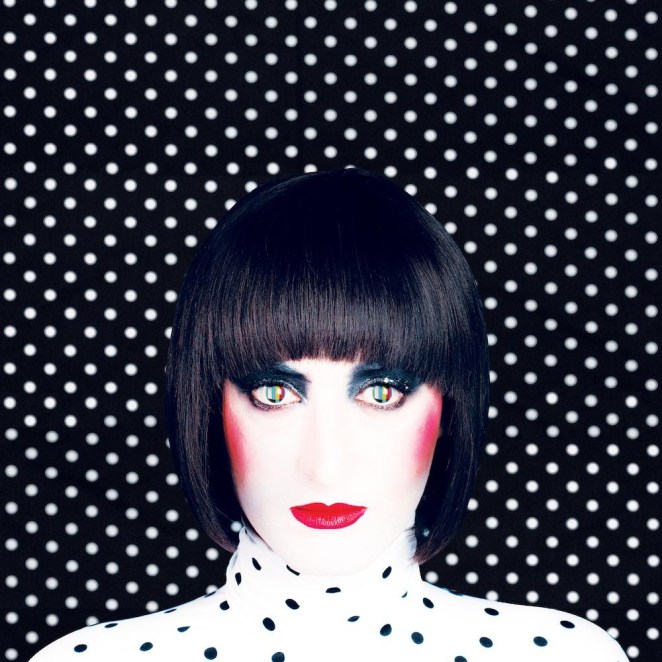Late night writing by the light of a TV screen in motel rooms, Art d’Ecco was seeing a world never visible to him before, and started piecing together In Standard Definition (Paper Bag Records).
Videos by American Songwriter
Working on his second album while on the road for his first, Trespasser, once the Vancouver-based artist returned home, he set up a home studio, and started demoing what would become his most conceptualized piece In Standard Definition.
“I had just written a whole album about being alone and introspective, and it was rather drab,” says d’Ecco of his 2018 debut. “I didn’t want to venture down that mindset again, so I cut together this collage of an idea, a concept album around entertainment.”
Silhouetted in old Hollywood glamour and boob tube fascination, In Standard Definition is a rhapsody examining the effect of an entertainment-consumed culture, from the analog, and standard definition television sets, and the obsession with celebrity—and being celebrated.
Throughout, d’Ecco salvages sounds from another era, laced in mod ’60s, ’70s glam, and a grainier world pre-MTV, from opening “Desires,” which explores the shifting tides of stardom and being yesterday’s news, through the enigmatic “TV God,” which finds d’Ecco swaggering through the more cretinous scope of show biz. Each song is d’Ecco’s own picture show demanding recognition, from the stompy dance of “I Am the Dancefloor,” the disco dashing “Head Rush,” and murkier instrumental interludes of “Channel 7 (Pilot Season)” and “Channel 11 (Reruns).” Smothered in synth, the new wave-circuiting “In High Definition” sounds like a song obsessively played in the ’80s, and “Good Looks” explores the sham of online dating, Definition slows around “The Message” and d’Ecco’s closing croon of “I Remember.”

Using a revolving door of artists in the Vancouver and Victoria, B.C. area, d’Ecco hand-picked musicians—including a violin and cello player from Vancouver Victoria Symphony Orchestra—and incorporated backing soul singer and other jazz and blues elements, layering tracks in drum machine, sax, and other compiled sound samples.
“Everybody didn’t really know the greater picture beyond their section of the song that they were going to be recording to tape,” says d’Ecco. “It was sort of like my own version of The Wrecking Crew, or if I might be so bold—and I’m not comparing myself to The Beach Boys—but how Brian [Wilson] wrote songs in his head and then had all these talented and legendary musicians come in and just elevate and embellish everything, and bring it up to another level. I kind of used that model as a sort of a blueprint for making this record.”
Recording in analog, in “standard definition,” was only fitting, says d’Ecco, and “the way entertainment was once created. I wanted to go back in time, exist in a different era and breathe my creativity through it.”
In Standard Definition started like an exercise, shifting from writing from the perspective of the entertainer looking out at the audience. “It can be a musician, it could be a writer, someone struggling or famous or in the twilight of the career,” says d’Ecco. “I’m going to write from the perspective of the audience consuming entertainment. And then I’m going to write a movie script in my head, and then play it out, and the audience might not know the motivation.”
Once d’Ecco latches on to a period, whether ’70s New York New Wave or early 1970s glam, he dives deep. “I’m the kid who would pull up his sleeves, sit cross legged near the stereo with headphones on and just look for the clues and absorb every sort of element I could to get into the head of how these musicians created this piece of art,” he says.

Ultimately, this was his process with In Standard Definition. “I realized all these records that I’m obsessed with are recorded on two-inch tapes, and the photographs on album covers were taken by a 35-mm [camera],” says d’Ecco. “I really adore when you see The Pretenders playing, and it’s on a grainy 16-mm shot video in a smoky bar. I love that shit, and I wanted to sonically bring my creativity through that analog process.”
Drawn to Roxy Music, specifically Brian Eno’s production, and Bowie’s 1973 album Aladdin Sane, are all experimental elements he wants to infuse into Art d’Ecco. “There was a precocious element to Roxy Music,” he says. “They were really heavy and cerebral, especially with Brian Eno playing on like a joystick synthesizer. This is not palatable for like a lot of audiences, but the statement was so avant-garde.”
Already moving on to another musical storyline, d’Ecco’s next album is already written. “I really love the idea of putting out a consistent stream of albums like they did back in the day,” he says. “The album cycle was around every 16 month, or an album a year. I think Bowie put out like an album a year from the early ’70s all the way to ‘Let’s Dance.’ What a prolific run, and every album sort of pivoted with hard right-hand turns, completely flipping things stylistically. I admire artists that mix it up.”
He adds, “The next album is already done, and in terms of the aesthetic, or the concept, that chapter’s been written, but I’m not divulging it yet.”
